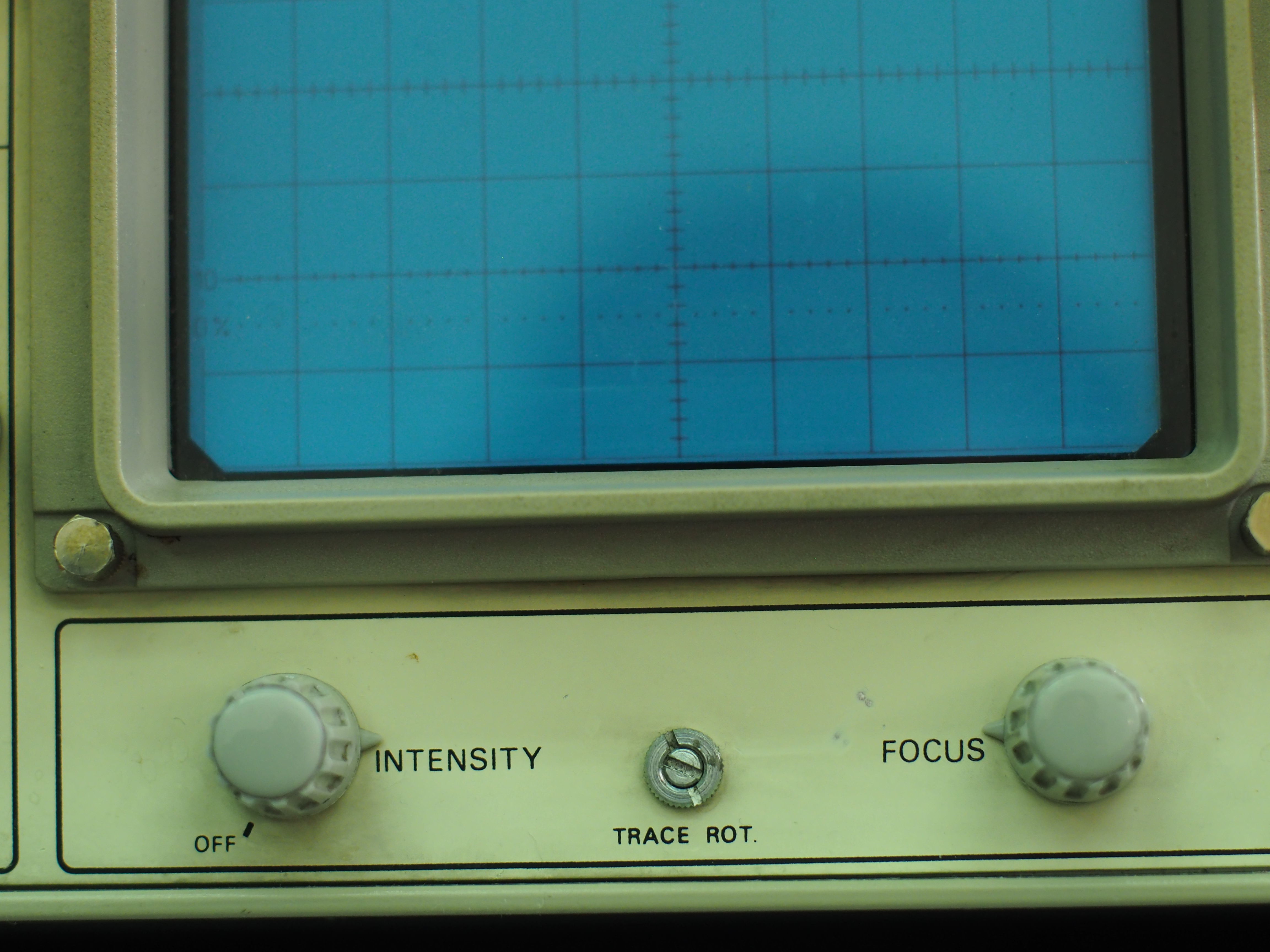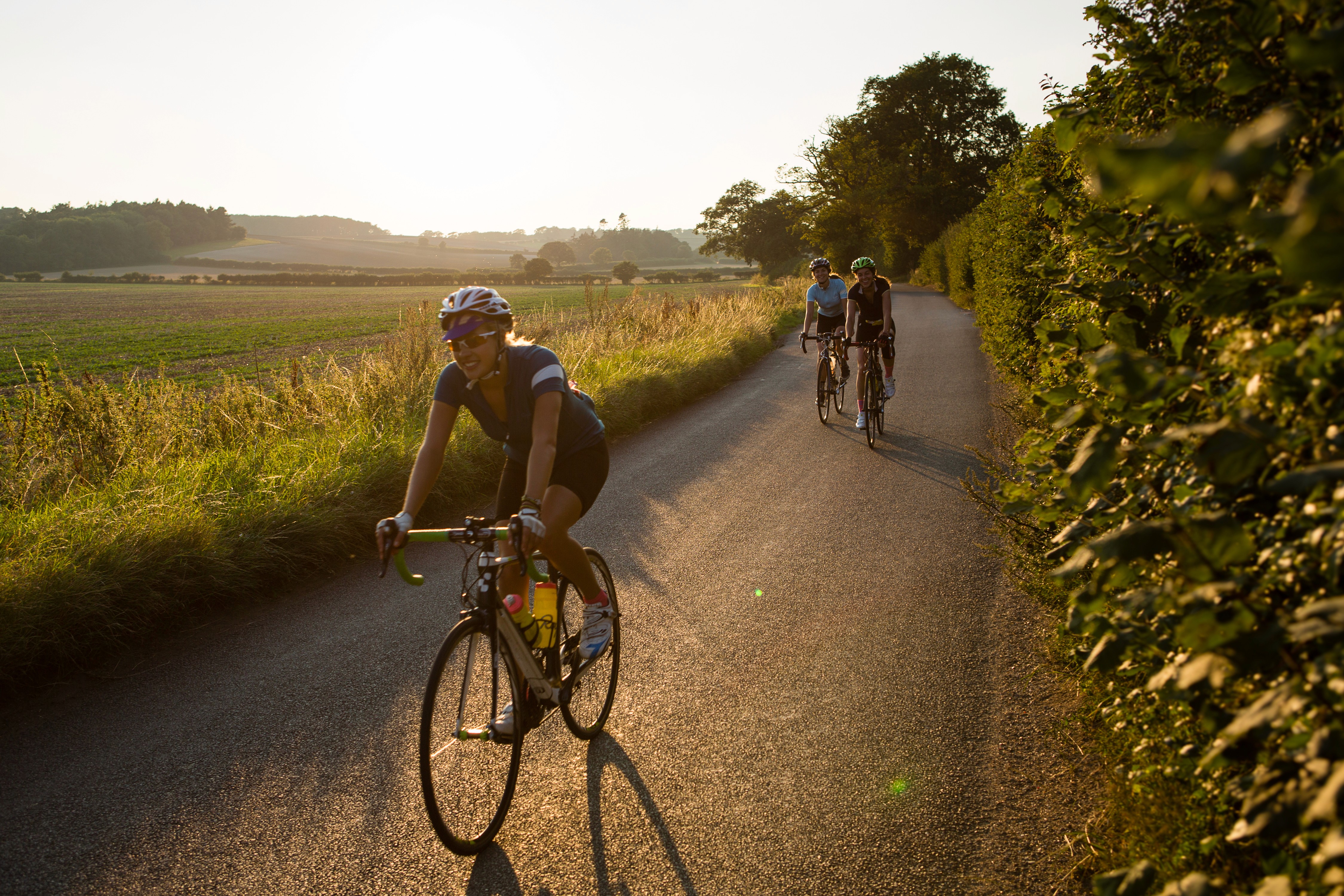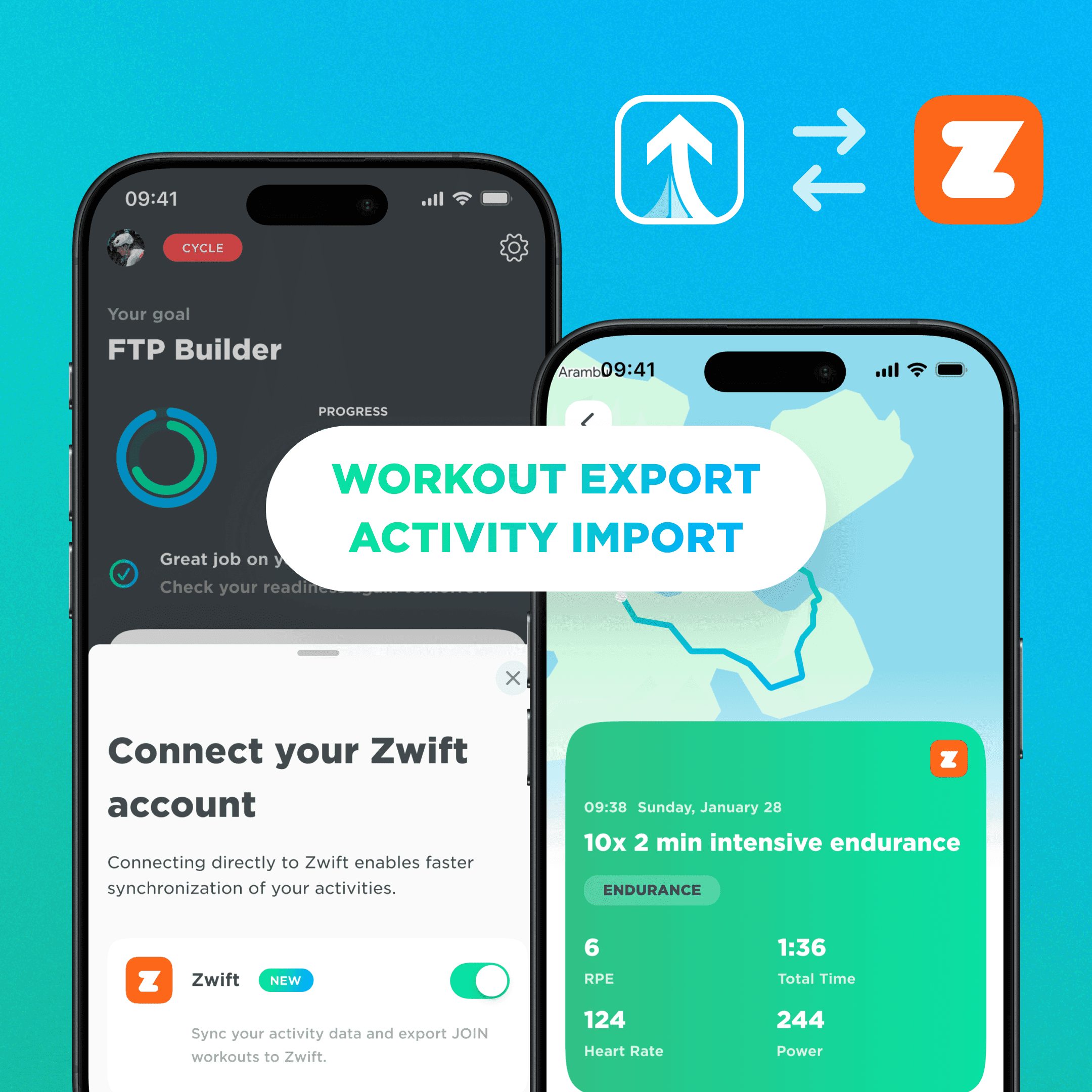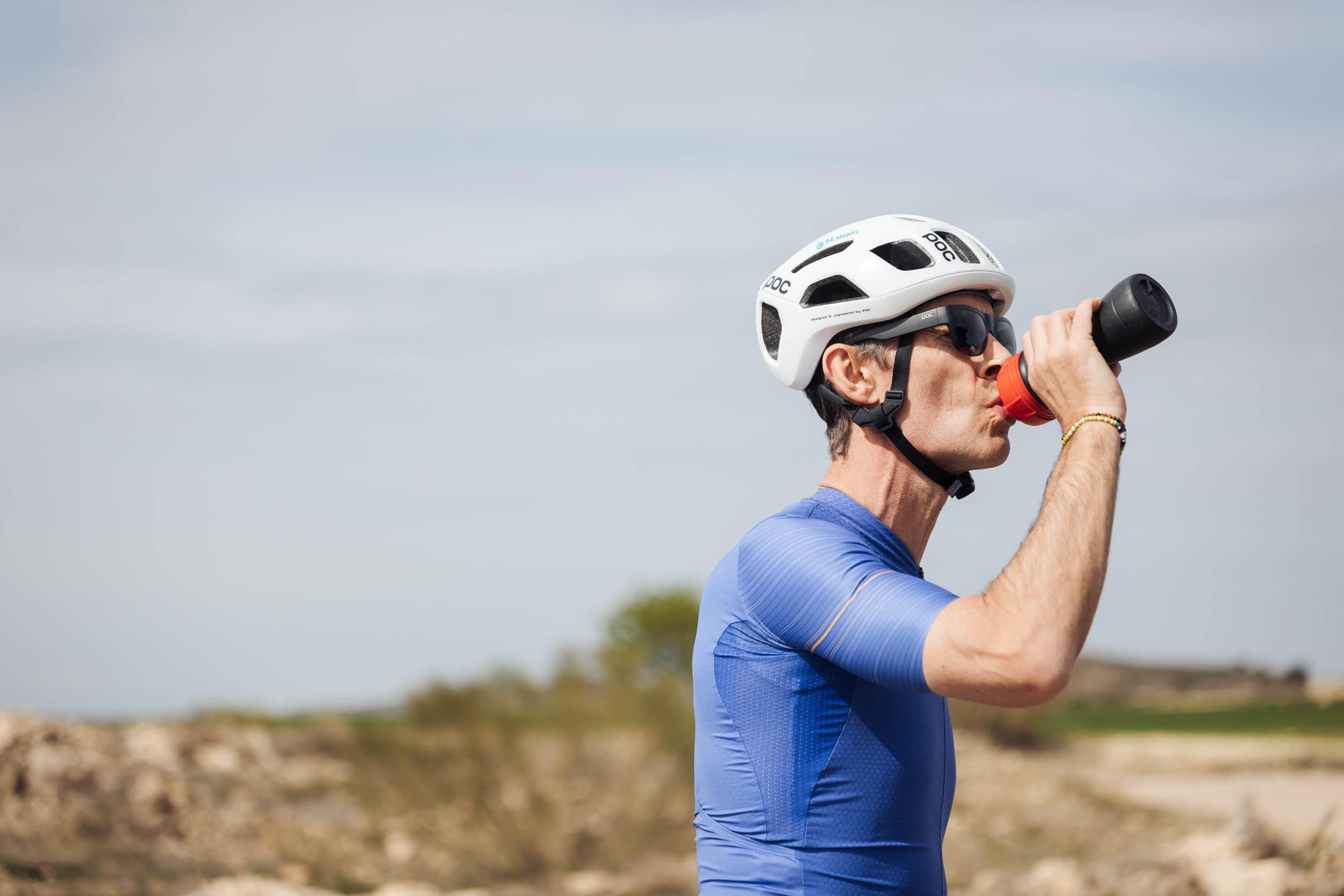How high should my Intensity Factor be?

Apr 11, 2020

How high should my Intensity Factor be?
Apr 11, 2020

How high should my Intensity Factor be?

Apr 11, 2020

The Intensity Factor (IF) is a very useful indicator. This article explains why it is so useful and how to interpret the number. Let's first look at how it is calculated. The intensity factor is obtained by dividing the NP (Normalized Power) by the FTP (Functional Threshold Power). The result should be somewhere between 0.55 (long endurance rides) and 1.2 (short and very intensive rides).
Normalized Power
Because it is based on Normalized Power and not on average power, it takes into account the variation in power during a workout. But it does not look at the length of the ride which means that it is not affected by, for example, muscle fatigue during a long ride (which can cause a distorted picture). Unlike the Training stress score (TSS), the intensity factor really shows how intensive a workout was. A TSS of 100 can be a very long endurance ride of three hours or an all-out time trial of one hour at FTP.
The importance of the intensity factor becomes clear when you start training as effectively as possible. Effective training means that every training session contributes towards your goal. When you know what is needed to achieve your goal, it is also clear how to train for it. By evaluating the intensity factor (in combination with other factors) of your training you can analyze whether you have achieved the intended training effect. And by knowing if you have completed the right training you know if you are on the right track to achieve your goal.
How to use the intensity factor?
This might sound a little abstract. So let's show you some, real life, typical intensity factor values. An intensity factor lower than 0.60 means you did a recovery ride to ensure that the muscles recover actively after a heavy training session. Endurance rides to improve your stamina usually score between 0.60 and 0.80. Tempo zone training sessions (where fat burning is maximal and a lot of energy is generated from carbohydrates) will see readings between 0.75 and 0.85, also called the 'sweet spot zone'. Between 0.90 and 1.05 we are talking about short FTP-intensity workouts, i.e. an all-out workout on a long climb, time trial or criterium of 20 minutes to an hour. Above 1.05 are short intensive workouts like a prologue or a short steep climb. Such high intensity factors can't be sustained for long. So in general longer workouts also have lower intensity factors.
But let's go back to effective training. If you want to ride a cyclosportive like La Marmotte, you have to climb 5000 altitude meters and ride 175 kilometers. This will easily see a lot of people take 8 hours to complete, so it is obvious that their endurance needs to be well developed. A high FTP is not essential in this case because riding an hour at the FTP-level will not bring you to the finish but only halfway through the first climb!
So what do you pay attention to when you evaluate your training or make a plan? You will have to do a lot of endurance training sessions at an intensity factor between 0,60 and 0,80. If you train with a higher or lower IF you train either too heavy or too light and not effectively.
Having said that, you'll always have to remember not to train too monotonously. The body adapts best when the training stimulus is neither too heavy nor too light. If you always train the same thing, the effectiveness of that training gradually decreases. Also mentally it is tiring to always do the same training. So always keep training with at least some variation. The intensity factor is your best friend who helps you keep an eye on that.
How to get better?
Getting better is all about timing. There are actually no good or bad workouts. There only is a bad combination or the wrong workout at the wrong time. The path towards progress is therefore a training plan with the right training stimulus, taking into account your level, goal and available time.
The Intensity Factor (IF) is a very useful indicator. This article explains why it is so useful and how to interpret the number. Let's first look at how it is calculated. The intensity factor is obtained by dividing the NP (Normalized Power) by the FTP (Functional Threshold Power). The result should be somewhere between 0.55 (long endurance rides) and 1.2 (short and very intensive rides).
Normalized Power
Because it is based on Normalized Power and not on average power, it takes into account the variation in power during a workout. But it does not look at the length of the ride which means that it is not affected by, for example, muscle fatigue during a long ride (which can cause a distorted picture). Unlike the Training stress score (TSS), the intensity factor really shows how intensive a workout was. A TSS of 100 can be a very long endurance ride of three hours or an all-out time trial of one hour at FTP.
The importance of the intensity factor becomes clear when you start training as effectively as possible. Effective training means that every training session contributes towards your goal. When you know what is needed to achieve your goal, it is also clear how to train for it. By evaluating the intensity factor (in combination with other factors) of your training you can analyze whether you have achieved the intended training effect. And by knowing if you have completed the right training you know if you are on the right track to achieve your goal.
How to use the intensity factor?
This might sound a little abstract. So let's show you some, real life, typical intensity factor values. An intensity factor lower than 0.60 means you did a recovery ride to ensure that the muscles recover actively after a heavy training session. Endurance rides to improve your stamina usually score between 0.60 and 0.80. Tempo zone training sessions (where fat burning is maximal and a lot of energy is generated from carbohydrates) will see readings between 0.75 and 0.85, also called the 'sweet spot zone'. Between 0.90 and 1.05 we are talking about short FTP-intensity workouts, i.e. an all-out workout on a long climb, time trial or criterium of 20 minutes to an hour. Above 1.05 are short intensive workouts like a prologue or a short steep climb. Such high intensity factors can't be sustained for long. So in general longer workouts also have lower intensity factors.
But let's go back to effective training. If you want to ride a cyclosportive like La Marmotte, you have to climb 5000 altitude meters and ride 175 kilometers. This will easily see a lot of people take 8 hours to complete, so it is obvious that their endurance needs to be well developed. A high FTP is not essential in this case because riding an hour at the FTP-level will not bring you to the finish but only halfway through the first climb!
So what do you pay attention to when you evaluate your training or make a plan? You will have to do a lot of endurance training sessions at an intensity factor between 0,60 and 0,80. If you train with a higher or lower IF you train either too heavy or too light and not effectively.
Having said that, you'll always have to remember not to train too monotonously. The body adapts best when the training stimulus is neither too heavy nor too light. If you always train the same thing, the effectiveness of that training gradually decreases. Also mentally it is tiring to always do the same training. So always keep training with at least some variation. The intensity factor is your best friend who helps you keep an eye on that.
How to get better?
Getting better is all about timing. There are actually no good or bad workouts. There only is a bad combination or the wrong workout at the wrong time. The path towards progress is therefore a training plan with the right training stimulus, taking into account your level, goal and available time.
The Intensity Factor (IF) is a very useful indicator. This article explains why it is so useful and how to interpret the number. Let's first look at how it is calculated. The intensity factor is obtained by dividing the NP (Normalized Power) by the FTP (Functional Threshold Power). The result should be somewhere between 0.55 (long endurance rides) and 1.2 (short and very intensive rides).
Normalized Power
Because it is based on Normalized Power and not on average power, it takes into account the variation in power during a workout. But it does not look at the length of the ride which means that it is not affected by, for example, muscle fatigue during a long ride (which can cause a distorted picture). Unlike the Training stress score (TSS), the intensity factor really shows how intensive a workout was. A TSS of 100 can be a very long endurance ride of three hours or an all-out time trial of one hour at FTP.
The importance of the intensity factor becomes clear when you start training as effectively as possible. Effective training means that every training session contributes towards your goal. When you know what is needed to achieve your goal, it is also clear how to train for it. By evaluating the intensity factor (in combination with other factors) of your training you can analyze whether you have achieved the intended training effect. And by knowing if you have completed the right training you know if you are on the right track to achieve your goal.
How to use the intensity factor?
This might sound a little abstract. So let's show you some, real life, typical intensity factor values. An intensity factor lower than 0.60 means you did a recovery ride to ensure that the muscles recover actively after a heavy training session. Endurance rides to improve your stamina usually score between 0.60 and 0.80. Tempo zone training sessions (where fat burning is maximal and a lot of energy is generated from carbohydrates) will see readings between 0.75 and 0.85, also called the 'sweet spot zone'. Between 0.90 and 1.05 we are talking about short FTP-intensity workouts, i.e. an all-out workout on a long climb, time trial or criterium of 20 minutes to an hour. Above 1.05 are short intensive workouts like a prologue or a short steep climb. Such high intensity factors can't be sustained for long. So in general longer workouts also have lower intensity factors.
But let's go back to effective training. If you want to ride a cyclosportive like La Marmotte, you have to climb 5000 altitude meters and ride 175 kilometers. This will easily see a lot of people take 8 hours to complete, so it is obvious that their endurance needs to be well developed. A high FTP is not essential in this case because riding an hour at the FTP-level will not bring you to the finish but only halfway through the first climb!
So what do you pay attention to when you evaluate your training or make a plan? You will have to do a lot of endurance training sessions at an intensity factor between 0,60 and 0,80. If you train with a higher or lower IF you train either too heavy or too light and not effectively.
Having said that, you'll always have to remember not to train too monotonously. The body adapts best when the training stimulus is neither too heavy nor too light. If you always train the same thing, the effectiveness of that training gradually decreases. Also mentally it is tiring to always do the same training. So always keep training with at least some variation. The intensity factor is your best friend who helps you keep an eye on that.
How to get better?
Getting better is all about timing. There are actually no good or bad workouts. There only is a bad combination or the wrong workout at the wrong time. The path towards progress is therefore a training plan with the right training stimulus, taking into account your level, goal and available time.
More Relevant Articles
Discover valuable training tips to enhance your cycling performance.
More Relevant Articles
Discover valuable training tips to enhance your cycling performance.
More Relevant Articles
Discover valuable training tips to enhance your cycling performance.

Unlock Your Cycling Potential Today
Join thousands of cyclists who have improved their performance with JOIN's training plans.
Probeer het nu
Meer Informatie

Unlock Your Cycling Potential Today
Join thousands of cyclists who have improved their performance with JOIN's training plans.
By joining, you agree to our Terms and Conditions and our Privacy Policy.

Unlock Your Cycling Potential Today
Join thousands of cyclists who have improved their performance with JOIN's training plans.
By joining, you agree to our Terms and Conditions and our Privacy Policy.
Join Now
Join Now



